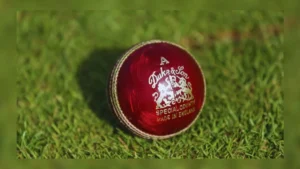In cricket, a “duck” refers to a batter being out without scoring a single run. It is now not a second of any player’s goal; however, nearly every cricketer studies it at some unspecified time in the future of their career. While getting out for a duck is disappointing, there are numerous forms of geese, and some are even more embarrassing than others.
There are eight essential types of Duck in cricket, and each has its very own unique scenario. These consist of the golden duck, silver duck, bronze duck, diamond duck, royal duck, laughing duck, pair, and king pair.
Let’s take a look at what each type of duck means.
The Different Types of Ducks in Cricket
1. Golden Duck

A golden duck happens when a batter is dismissed without scoring any runs on the very first delivery they face after coming in to bat. It’s one of the quickest ways to be out and is often seen as the most embarrassing.
2. Silver Duck

After the golden duck, comes the silver duck. This occurs when the batter is out for zero after facing the second ball of their innings. It’s still very early, but not as immediate as the golden duck.
3. Bronze Duck
Similar to the silver duck, a bronze duck happens when a player is out for zero after the third ball of their innings. It’s still an unfortunate situation, though slightly less of an immediate downfall compared to the golden and silver ducks.
4. Diamond Duck
The diamond duck is one of the worst scenarios in cricket. It happens when a batter is out without facing a single ball, usually due to being run out. Another way to get a diamond duck is when a batter hits the ball down the wicket, and the bowler deflects it onto the stumps at the non-striker’s end.
5. Royal Duck/Platinum Duck
A royal duck or Platinum Duck, is particularly tough on opening batters. It occurs when a batter is dismissed without scoring on the very first ball of their team’s innings.
Also Read: From Cricket Stardom To Everyday Jobs: The Post-IPL Careers Of These Players
6. Laughing Duck
In contrast to the royal duck, the laughing duck takes place when a batter is out on the last ball of their team’s innings. It’s a bit of an odd feeling, as the match is ending, but the batter’s performance hasn’t helped.
7. Pair
The term “pair” is used in Test cricket when a batter gets out for zero in both innings of a match. It’s especially tough in longer formats, as it means the player was unable to score in either opportunity.
8. King Pair

A king pair is an even rarer and more unfortunate occurrence. This happens when a batter is out for zero on the very first ball they face in both innings of a Test match.
Each of these ducks adds a different level of embarrassment to a cricketer’s record. However, they are all part of the game, and every player can bounce back from these setbacks.





























